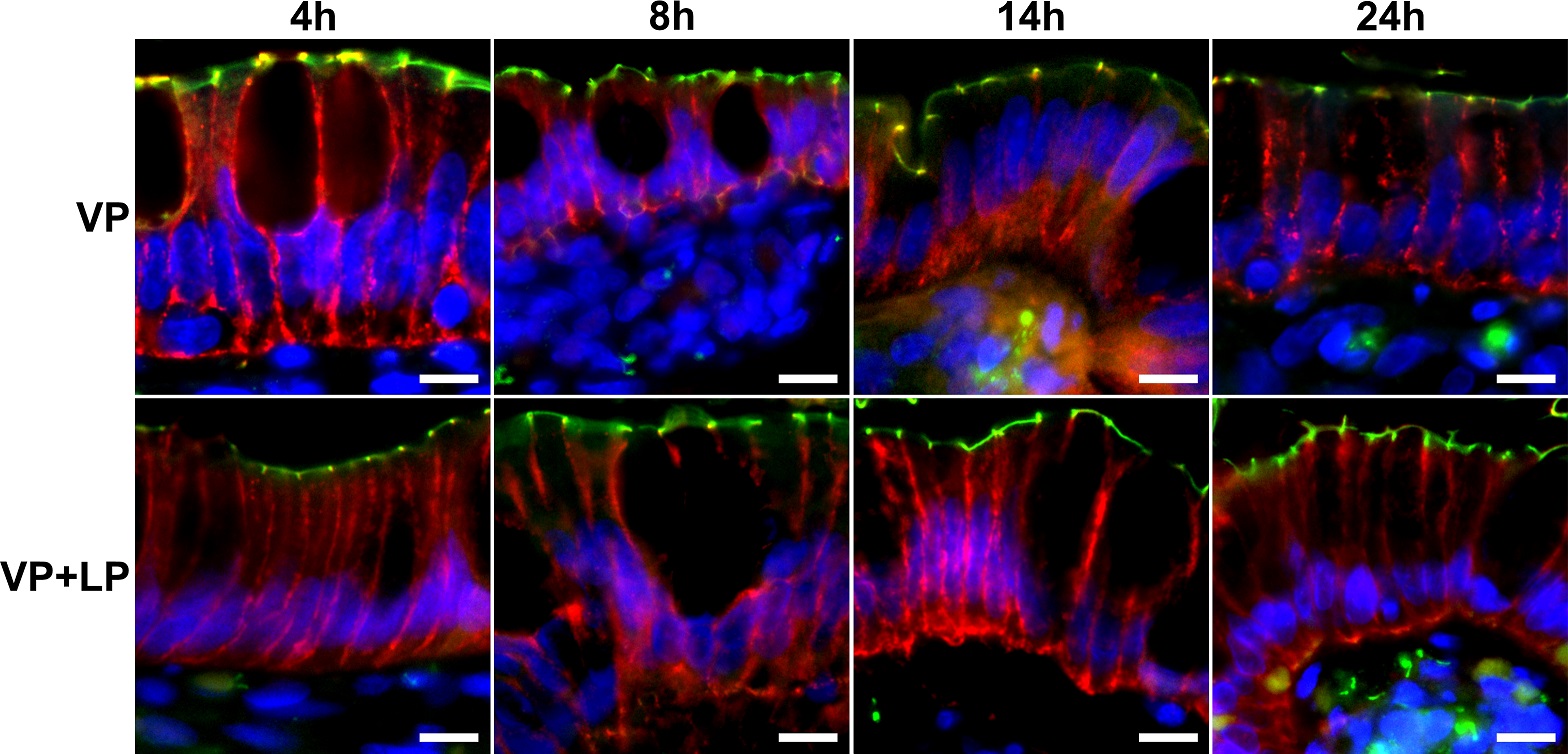Luminal preservation with a polyethylene glycol-based solution alleviates mucosal damage in human intestines
John M. Söfteland1,2, Jasmine Bagge1,2, Arvind M. Padma1, Mats Hellström1, Yafeng Wang1, Changlian Zhu1, Mihai Oltean1,2.
1Sahlgrenska Academy at the University f Gothenburg, Clinical Sciences, Gothenburg, Sweden; 2Sahlgrenska University Hospital, Transplant Institute, Gothenburg, Sweden
Background: Intestinal transplantation has greatly evolved over the last decade but is still associated with a significant morbidity and mortality, particularly due to infections. Mucosal damage occurs after a few hours of cold storage and may progress until mucosal breakdown. This event may favour bacterial translocation and life threatening infections as well as massive fluid losses. Luminal preservation (LP) with polyethyleneglycol (PEG) has been shown to alleviate this damage in rodents but evidence using human tissue is missing.
Materials and Methods: Ileum was harvested from 24 DBD multiorgan donors after vascular perfusion with IGL-1. A PEG-3350 solution (1 ml/cm) was introduced luminally (VP+LP group) or omitted in controls (VP). Sampling was performed after 4h, 8h, 14h and 24h of cold storage. Histological injury was graded according to the Chiu/Park score. Tight junctions (ZO-1, claudin-3, claudin-4, occluding, tricellulin) were studied by PCR, Western blot and immunofluorescence whereas apoptosis was assessed using caspase-2, -3 and -9 assays. Edema was quantified by weighing the samples before and after freeze drying.
Results and Discussion: Mucosal injury was significantly lower in the VP+LP group after 4 hours (median grade1) and 24 hours (median grade 3) of cold storage. Tight junction proteins showed gradual degradation and complex qualitative changes, paralleling the mucosal impairment, and were earlier and more severe in the intestines without luminal preservation. The apical TJ proteins (occluding, tricellulin) seem to be affected earlier than the basolateral proteins (claudin3, claudin-4). Luminal preservation seemed to delay apical protein degradation and basolateral protein translocation into the cytoplasm.

No increase in edema was found in the LP intestines. The intestines receiving luminal treatment had significantly less caspase-3 and -9 activation (ongoing apoptosis). The intestines undergoing luminal preservation revealed the stimulation of the unfolding protein response pathway (increased CHOP/GADD153 mRNA).
Conclusion: The current results indicate for the first time in human samples that luminal PEG is safe and effective in reducing and delaying damage to the intestinal epithelium during intestinal cold storage. The protective mechanisms appear to involve apical protein coating, controlling fluid shifts and modulating the endoplasmic reticulum stress.
[1] Oltean M, Joshi M, Bjorkman E, Oltean S, Casselbrant A, Herlenius G, Olausson M Intraluminal polyethylene glycol stabilizes the tight junctions and improves intestinal preservation in the rat Am J Transpl 12: 2044-2051, 2012
[2] Casselbrant A, Söfteland JM, Hellström M, Malinauskas M, Oltean M.Luminal Polyethylene Glycol Alleviates Intestinal Preservation Injury Irrespective of Molecular Size. J Pharmacol Exp Ther. 2018;366:29-36
[3] Søfteland JM, Casselbrant A, Akyürek LM, Hellström M, Oltean M. The Impact of Age and Luminal Preservation on the Development of Intestinal Preservation Injury in Rats. Transplantation. 2020;104(1):e8–e15